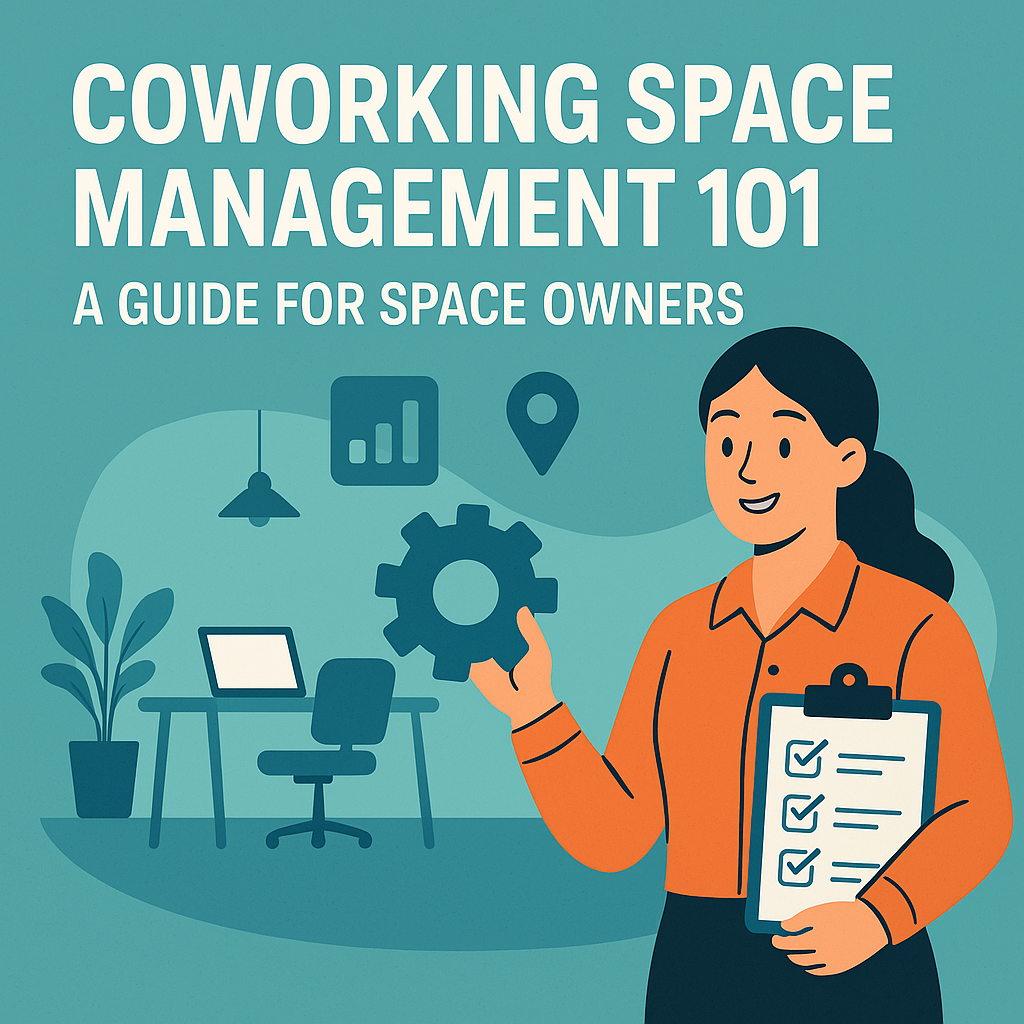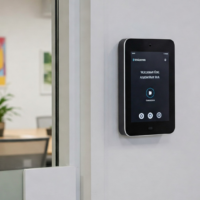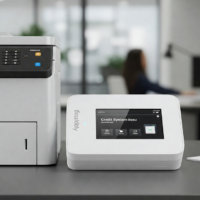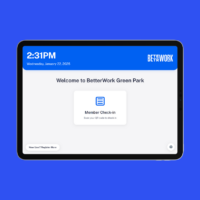Introduction
Coworking spaces have become a hub for entrepreneurs, freelancers, and businesses looking for flexible and cost-effective office solutions. With the increasing popularity of remote work and the gig economy, managing a coworking space effectively is crucial to ensure long-term success and high member retention.
Effective coworking space management involves optimizing operations, creating a strong community, leveraging technology, and ensuring a seamless user experience. This guide will walk you through all the essential aspects of coworking space management, from space planning and member engagement to automation and financial sustainability. Whether you’re launching a new coworking space or improving an existing one, this guide will provide actionable strategies to help you succeed.
Understanding Coworking Space Management
Coworking space management involves overseeing the daily operations, member interactions, and financial aspects of a shared workspace. It requires a blend of hospitality, technology, and business acumen to create a productive and inviting environment for members.
Key Components of Coworking Space Management:
- Operations Management – Handling space allocation, bookings, and maintenance.
- Member Experience – Ensuring a welcoming and collaborative environment.
- Technology & Automation – Using software for bookings, access control, and payments.
- Community Building – Fostering networking and professional growth among members.
- Financial Planning – Managing revenue streams, pricing strategies, and profitability.
- Marketing & Growth – Attracting new members and retaining existing ones.
Let’s dive deeper into each of these aspects to understand how to create a thriving coworking space.
1. Efficient Space Planning and Operations
Optimizing Layout and Design
The design of your coworking space plays a crucial role in member productivity and satisfaction. Consider the following elements:
- Zoning: Create designated areas for different work styles, such as open desks, private offices, and meeting rooms.
- Ergonomics: Invest in high-quality furniture to enhance comfort and prevent health issues.
- Natural Light and Ventilation: Improve ambiance and energy levels with adequate lighting and airflow.
- Soundproofing: Use acoustic panels and private booths for members who need a quiet workspace.
Streamlining Daily Operations
Managing daily tasks efficiently ensures a seamless experience for members. Here are key areas to focus on:
- Automated Booking Systems: Enable members to book desks, meeting rooms, and amenities online.
- Smart Access Control: Use digital keycards or mobile apps for secure entry.
- Regular Maintenance: Schedule cleaning, equipment checks, and internet speed monitoring.
- Flexible Membership Options: Offer hourly, daily, monthly, and yearly plans to cater to diverse needs.
Example: WeWork, a global coworking space provider, optimizes space usage through intelligent design and advanced booking systems to ensure smooth operations and high occupancy rates.
2. Enhancing Member Experience and Retention
Building a Strong Community
A coworking space is more than just a place to work—it’s a community. Foster a collaborative environment by:
- Hosting Networking Events: Organize workshops, seminars, and social gatherings.
- Creating Communication Channels: Use Slack, Discord, or WhatsApp groups to keep members engaged.
- Encouraging Collaboration: Set up community boards for members to share opportunities and projects.
- Providing Perks & Benefits: Offer discounts on software, gym memberships, or local businesses.
Offering Personalized Services
Personalized experiences improve member satisfaction. Consider:
- Customized Workspaces: Allow members to personalize their desks.
- Wellness Programs: Provide meditation rooms, fitness areas, or ergonomic assessments.
- Concierge Services: Assist with travel bookings, mail handling, or IT support.
3. Leveraging Technology for Seamless Management
Essential Tech Tools for Coworking Spaces
- Coworking Management Software: Platforms like Nexudus, Optix, or Cobot streamline bookings, payments, and member communication.
- Smart Access Control: Systems like Kisi or Openpath allow secure, keyless entry.
- AI-Powered Chatbots: Automate customer inquiries and support through AI-driven chat solutions.
- Analytics and Insights: Use data analytics tools to track occupancy rates and member preferences.
Automating Administrative Tasks
Reduce manual work by integrating automation:
- Billing & Payments: Set up recurring payments for seamless transactions.
- Booking & Scheduling: Use AI-powered systems to optimize room usage.
- Member Onboarding: Create automated welcome emails and orientation guides.
Example: Impact Hub, a global coworking brand, uses AI-driven management software to enhance member experience and automate operations.
4. Financial Planning and Sustainability
Creating a Profitable Pricing Model
To ensure financial stability, structure your pricing effectively:
- Hot Desks: Flexible seating for short-term users.
- Dedicated Desks: Fixed spots for long-term members.
- Private Offices: Enclosed spaces for teams and businesses.
- Virtual Memberships: Access to networking events and online resources.
Diversifying Revenue Streams
Relying solely on membership fees may not be sustainable. Additional income sources include:
- Event Hosting: Rent out spaces for corporate events and workshops.
- Partnerships & Sponsorships: Collaborate with local businesses to offer member perks.
- Merchandising: Sell branded office supplies, apparel, or snacks.
Stat: According to Deskmag, 40% of coworking spaces increase profitability by offering additional services beyond memberships.
5. Marketing and Member Acquisition
Attracting New Members
Effective marketing strategies can help grow your coworking community:
- SEO-Optimized Website: Improve online visibility with relevant keywords.
- Social Media Engagement: Share testimonials, member stories, and behind-the-scenes content.
- Referral Programs: Incentivize current members to bring in new clients.
- Google My Business & Local Listings: Improve search rankings for people looking for coworking spaces nearby.
Retaining Existing Members
High retention rates ensure steady revenue:
- Regular Check-ins: Gather feedback to improve services.
- Exclusive Membership Perks: Offer discounts on renewals.
- Loyalty Programs: Reward long-term members with additional benefits.
Example: Industrious, a premium coworking brand, retains members by providing exceptional hospitality, premium amenities, and personalized service.
How Deskos Can Help You Maximize Efficiency and Revenue
Managing a coworking space can be challenging without the right tools. Deskos provides an all-in-one solution to streamline operations, increase revenue, and enhance member experience. Here’s how:
A. Smart Booking and Space Utilization
An AI-powered desk and room booking system helps eliminate scheduling conflicts, ensuring seamless workspace management. With real-time analytics, you can monitor space occupancy and optimize seating arrangements for maximum efficiency. Automated reminders and notifications further reduce no-shows and cancellations, improving overall space utilization and member experience.
B. Member Engagement and Retention
Create personalized onboarding journeys to help new members integrate seamlessly into your workspace. Gamification and reward programs encourage long-term membership by fostering engagement and loyalty. AI-driven insights provide a deeper understanding of member preferences, allowing you to enhance their experience and maximize retention.
C. Revenue Growth and Monetization
Implement dynamic pricing models to maximize revenue during peak hours while ensuring optimal space utilization. Seamless payment integration simplifies billing and invoicing, providing a hassle-free experience for members. Unlock upselling opportunities by offering additional services, meeting rooms, and event bookings to enhance revenue and member satisfaction.
D. Security and Access Control
Enhance security and convenience with smart access control systems, ensuring hassle-free entry for members. Offer customizable membership tiers with different access levels to cater to diverse needs. Streamline guest check-ins with visitor management tools, creating a seamless and professional experience.
By integrating Deskos, coworking spaces can reduce operational inefficiencies, improve member satisfaction, and increase profitability effortlessly.
Incorporating DeskOS into your coworking space management strategy can significantly alleviate the complexities associated with daily operations, allowing you to focus on fostering a thriving coworking community.
Conclusion
Managing a coworking space successfully requires a strategic approach that balances operations, technology, community building, and financial sustainability. By leveraging automation, optimizing space design, and prioritizing member experience, coworking space owners can create thriving, long-term businesses.
Actionable Steps for Space Owners:
- Implement automation tools to streamline operations.
- Enhance member experience through community engagement and personalized services.
- Optimize pricing models and diversify revenue streams.
- Leverage marketing strategies to attract and retain members.
- Monitor and adapt to industry trends for continuous growth.
By following these best practices, you can position your coworking space as a leader in the industry, ensuring success in the evolving world of shared workspaces.





